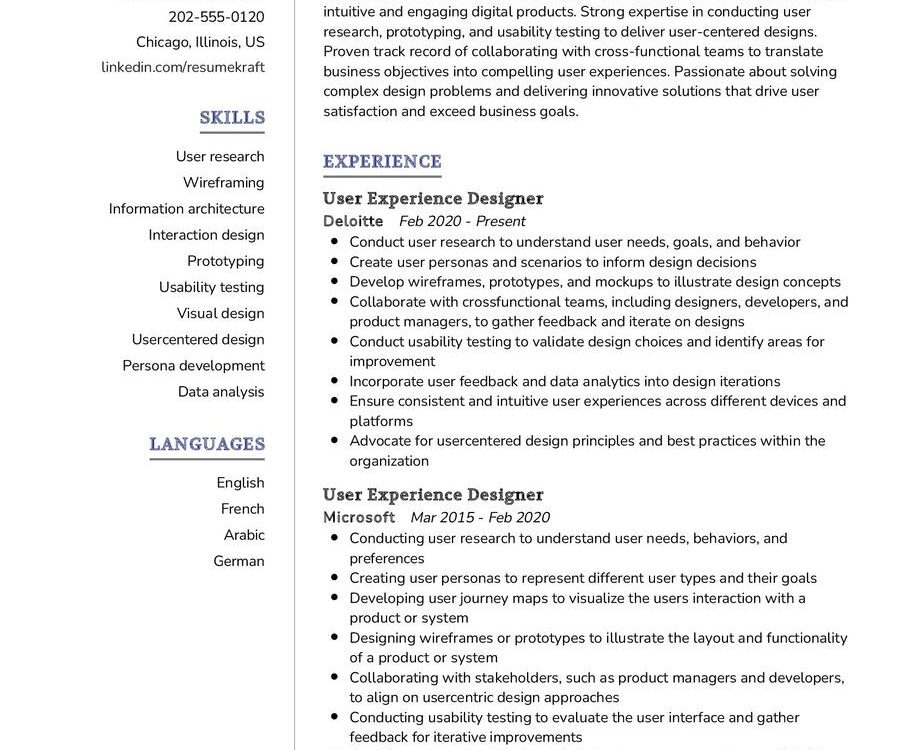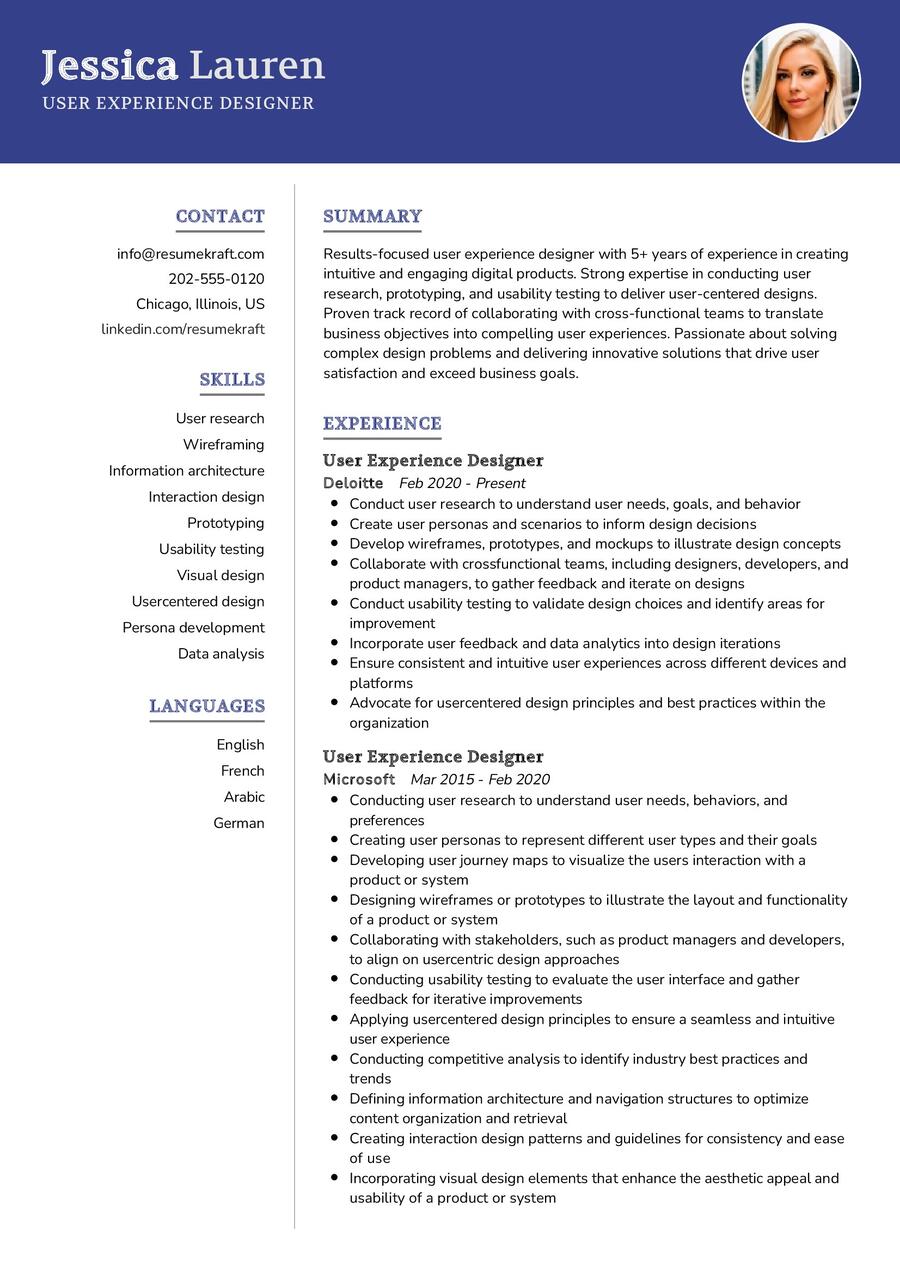Exploring the Role of a User Experience Designer
In the ever-evolving digital landscape, the position of a User Experience (UX) Designer holds a central role in crafting the digital interfaces that shape our online experiences. This article delves into the multifaceted role of a UX Designer, exploring the blend of creativity, empathy, and technical proficiency that defines this pivotal role.
Understanding the Job Requirements for a UX Designer
Embarking on a journey as a UX Designer involves meeting specific requirements that go beyond technical skills. Let’s explore the prerequisites that pave the way for a successful career in UX design:
- A degree in Human-Computer Interaction, Graphic Design, or a related field, providing a solid foundation in design principles.
- Proficiency in design tools such as Adobe XD, Sketch, or Figma, showcasing the ability to bring creative concepts to life.
- Experience in conducting user research and usability testing, essential for understanding user needs and improving design solutions.
- Strong communication and collaboration skills, vital for working effectively with cross-functional teams and stakeholders.
- Knowledge of front-end development languages like HTML, CSS, and JavaScript, facilitating seamless collaboration with developers.
- An impressive portfolio showcasing diverse design projects and demonstrating problem-solving skills.
Supplementing your skills with continuous learning and staying updated on design trends adds an extra layer of value to your profile.
Key Responsibilities of a UX Designer
The role of a UX Designer involves a spectrum of responsibilities that revolve around creating user-centric and aesthetically pleasing digital experiences. Here are the core responsibilities that define the UX Designer role:
- Conducting user research to understand the target audience and their needs, informing the design process.
- Creating wireframes and prototypes to visualize design concepts and gather feedback.
- Collaborating with product managers and developers to ensure the seamless integration of design solutions.
- Iterating on designs based on user feedback and usability testing results.
- Ensuring consistency in design elements across different platforms and devices.
- Staying abreast of industry trends and incorporating innovative design approaches.
- Advocating for the user within the team, ensuring that user experience remains a top priority.
Each responsibility is a thread in the intricate fabric of UX design, contributing to the creation of enjoyable and effective digital interactions.
Crafting an Impactful UX Designer Resume
Your resume is a gateway to showcasing your skills and experiences as a UX Designer. Here are some tips to create a resume that stands out:
- Highlight specific projects in your portfolio, detailing the challenges faced and the solutions implemented.
- Showcase your ability to collaborate by mentioning successful projects where you worked closely with developers and product managers.
- Quantify your achievements where possible, such as improvements in user engagement or successful product launches.
- Include any relevant certifications or courses you’ve completed, demonstrating your commitment to professional growth.
- Personalize your resume for each application, emphasizing skills and experiences that align with the specific job requirements.
Your resume is a canvas where you paint a picture of your design journey, so make it visually appealing and compelling.
Examples of UX Designer Resume Summaries
Your resume summary is the opening statement that sets the tone for your professional story. Here are some examples tailored for a UX Designer:
- “Creative UX Designer with a passion for transforming user needs into intuitive and visually appealing digital experiences. Known for collaborating seamlessly with cross-functional teams to deliver user-centric solutions.”
- “Experienced UX Designer with a proven track record in conducting user research and translating insights into compelling design solutions. Adept at creating wireframes and prototypes to bring concepts to life.”
- “Innovative UX Designer specializing in mobile app design, with a keen eye for detail and a commitment to delivering seamless and delightful user experiences.”
Your resume summary is your opportunity to capture the essence of your UX design journey in a few impactful sentences.
Building a Robust Experience Section for Your UX Designer Resume
Your experience section is the heart of your resume, narrating the story of your career journey. Here are examples to guide you in presenting your UX design experiences:
- “Led the redesign of a popular e-commerce website, resulting in a 30% increase in user engagement and a 20% rise in conversion rates.”
- “Collaborated with a mobile development team to create an award-winning travel app, focusing on an intuitive user interface and seamless navigation.”
- “Contributed to the redesign of a SaaS platform, incorporating user feedback and usability testing to enhance overall user satisfaction.”
Each experience is a chapter in your UX design story, highlighting your contributions and impact on the projects you’ve been a part of.
Education Section for Your UX Designer Resume
Your educational background is a crucial aspect of your UX Designer resume. Here’s how you can present your academic journey:
- Master of Fine Arts in Interaction Design, XYZ University, a program focused on merging creativity with technology, 2018.
- Bachelor of Science in Graphic Design, ABC University, where I honed my visual communication skills, 2015.
- UX Design Certification, Interaction Design Foundation, showcasing continuous learning and specialization, 2019.
Each educational milestone contributes to your expertise as a UX Designer, showcasing your commitment to mastering the craft.
Key UX Designer Skills for Your Resume
Your skill set as a UX Designer is a toolbox filled with the tools needed to create exceptional digital experiences. Let’s outline the essential skills for a UX Designer:
Soft Skills:
- Creative thinking, the ability to generate innovative design concepts.
- Empathy, understanding and prioritizing user needs throughout the design process.
- Collaboration, working effectively with cross-functional teams to bring designs to fruition.
- Communication, conveying design concepts and rationale clearly to stakeholders.
- Adaptability, staying flexible in the face of evolving project requirements.
Hard Skills:
- Proficiency in design tools, such as Adobe XD, Sketch, or Figma.
- User research and usability testing, gathering insights to inform design decisions.
- HTML, CSS, and JavaScript, facilitating effective communication with developers.
- Wireframing and prototyping, visualizing design concepts for feedback and iteration.
- Knowledge of design principles and trends, staying updated on industry standards.
Each skill in your toolbox contributes to your ability to create compelling and user-friendly digital experiences.
Common Mistakes to Avoid When Writing a UX Designer Resume
Avoiding common pitfalls is crucial when crafting a UX Designer resume. Here are some mistakes to steer clear of:
- Using generic terms without showcasing your unique design approach.
- Focusing solely on aesthetics without highlighting the user-centric aspects of your designs.
- Omitting specific project details and achievements, leaving your impact unclear.
- Ignoring the importance of a visually appealing and well-organized resume design.
- Neglecting to tailor your resume for each job application, missing the opportunity to align with specific requirements.
Avoiding these mistakes ensures that your UX Designer resume is a true reflection of your skills and experiences.
Key Takeaways for Your UX Designer Resume
As you craft your UX Designer resume, keep these key points in mind:
- Highlight your creativity and problem-solving skills through specific project examples.
- Showcase your ability to collaborate with cross-functional teams to achieve successful design outcomes.
- Quantify your achievements to provide tangible evidence of your impact.
- Emphasize continuous learning by including relevant certifications and courses.
Your resume is not just a document; it’s a visual representation of your design journey and expertise. Make it compelling and unique to stand out in the competitive field of UX design. Best of luck!
Finally, feel free to utilize resources like AI Resume Builder, Resume Design, Resume Samples, Resume Examples, Resume Skills, Resume Help, Resume Synonyms, and Job Responsibilities to create a standout application and prepare for the UX Designer job interview questions.


